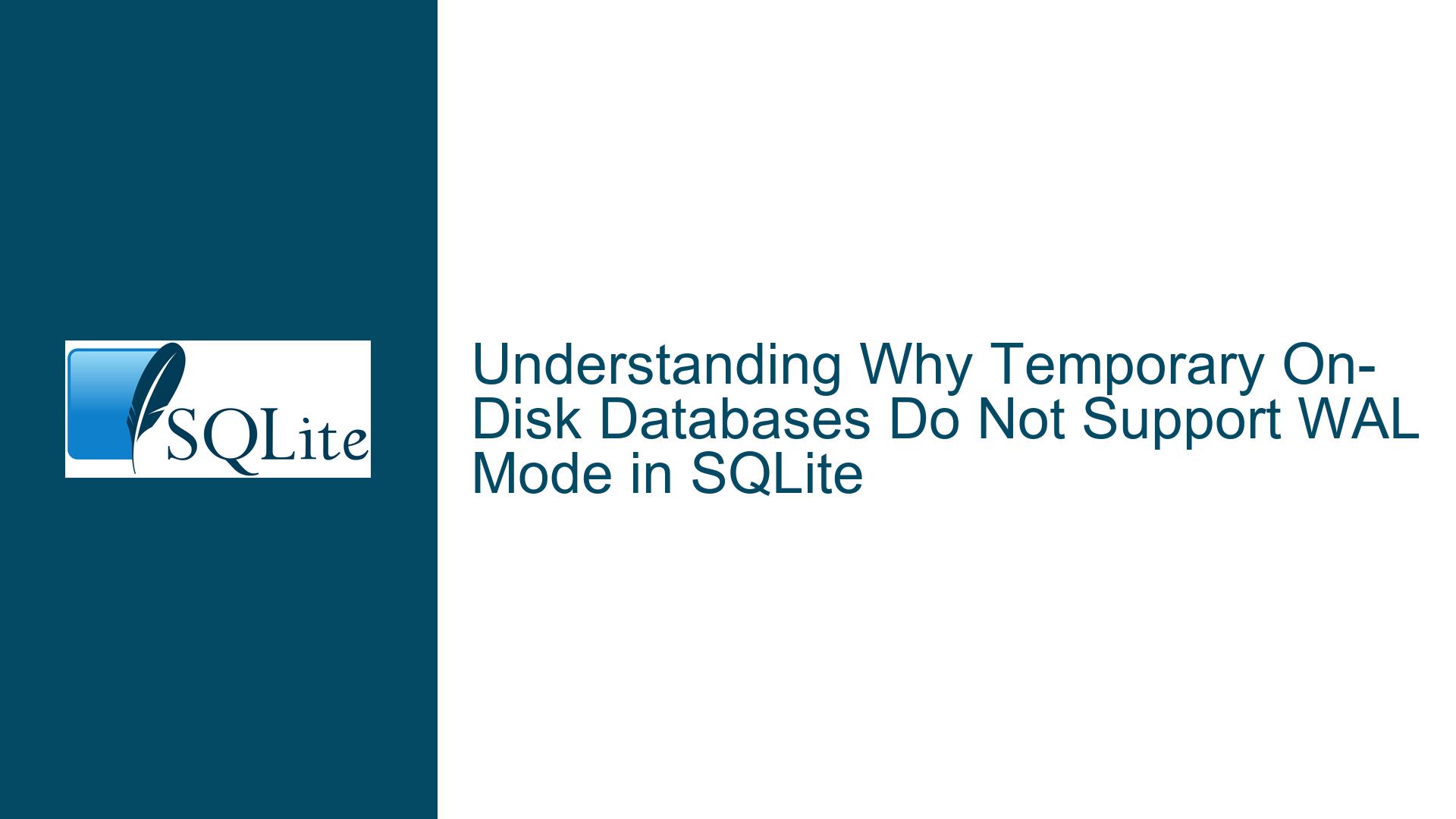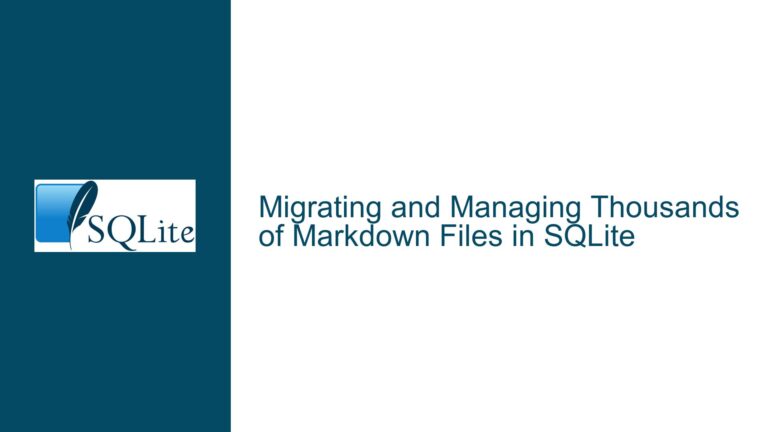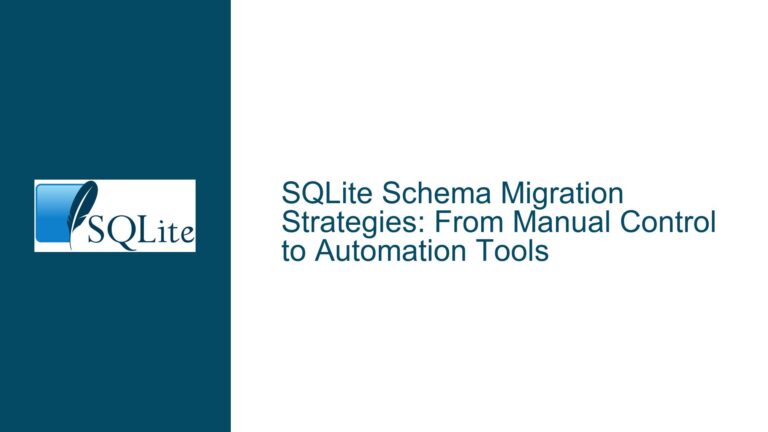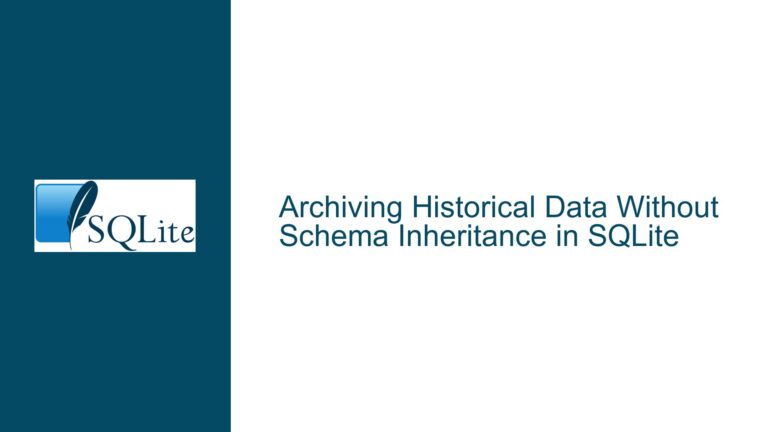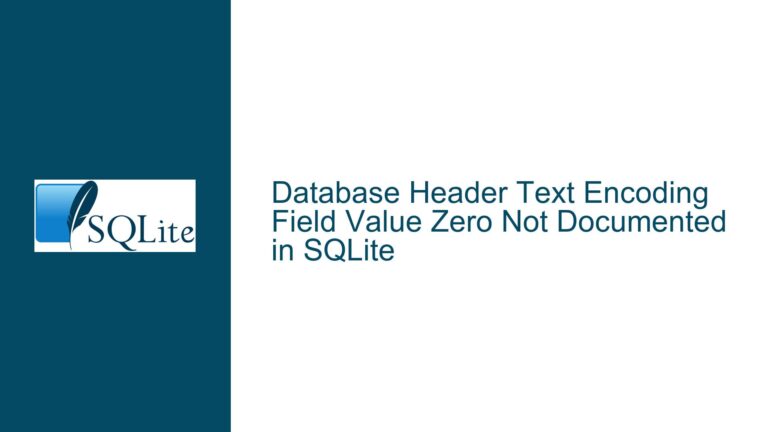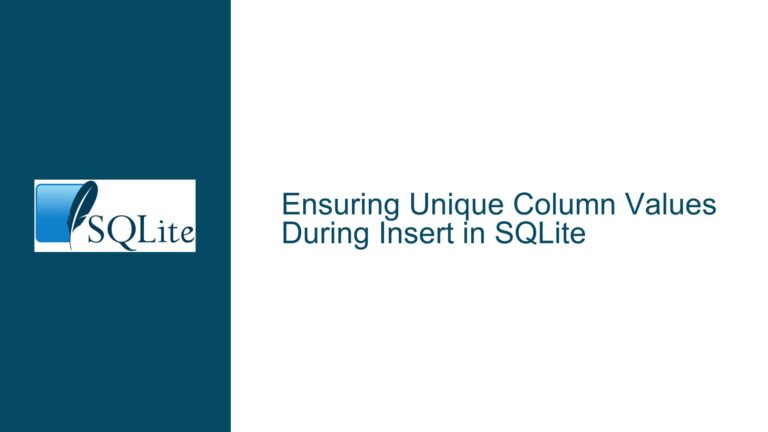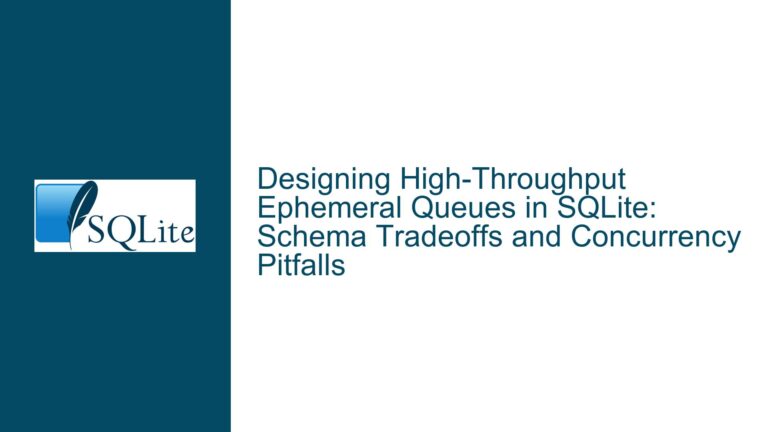Why Temporary On-Disk Databases Do Not Support WAL Mode in SQLite
Temporary On-Disk Databases and WAL Mode Limitations
SQLite is a widely-used, lightweight, and embedded relational database management system that offers various features to ensure data integrity, performance, and reliability. One of its key features is the Write-Ahead Logging (WAL) mode, which enhances concurrency and performance by allowing readers and writers to operate simultaneously without blocking each other. However, a notable limitation exists when it comes to temporary on-disk databases: they do not support WAL mode. This behavior is not a bug but a deliberate design choice rooted in the nature of temporary files and the requirements of WAL mode.
When a temporary on-disk database is created using an empty path string with sqlite3_open_v2, SQLite generates a transient file that exists only for the duration of the database connection. Attempting to enable WAL mode on such a database results in the PRAGMA journal_mode = WAL command returning "delete," indicating that WAL mode is not applied. Additionally, operations like sqlite3_file_control(..., SQLITE_FCNTL_PERSIST_WAL, ...) return SQLITE_NOTFOUND, further confirming that WAL mode is unsupported for temporary databases.
This limitation raises important questions about the underlying mechanisms of temporary files and WAL mode. Why does SQLite enforce this restriction? What are the technical constraints that prevent WAL mode from being used with temporary databases? Understanding these issues requires a deep dive into the behavior of temporary files, the architecture of WAL mode, and the interplay between them.
The Role of File System Behavior in Temporary Database Constraints
The inability of temporary on-disk databases to support WAL mode is closely tied to the behavior of temporary files in modern operating systems. On non-Windows platforms, temporary files are typically deleted immediately after they are opened. This means that while the file handle remains valid and the file can be read from or written to, the file itself is no longer visible in the file system. The operating system reclaims the file’s resources as soon as the file handle is closed, either explicitly via functions like fclose() or implicitly when the application terminates.
This behavior has significant implications for WAL mode, which relies on the existence of auxiliary files such as the Write-Ahead Log (WAL) file and the shared memory file (SHM). These files must persist in the file system to ensure proper operation. For example, the WAL file contains uncommitted changes that need to be applied to the main database file during recovery, while the SHM file facilitates coordination between multiple database connections.
When a temporary database is created, its associated files are transient and lack a permanent presence in the file system. Since the WAL and SHM files cannot exist independently of the main database file, SQLite cannot reliably implement WAL mode for temporary databases. The absence of a stable file system path for these auxiliary files makes it impossible to maintain the consistency and durability guarantees that WAL mode provides.
Furthermore, the deletion of temporary files upon closure poses a challenge for journaling mechanisms. In the default rollback journal mode, SQLite uses a single journal file to track changes and facilitate atomic transactions. However, even this simpler journaling mechanism is constrained by the transient nature of temporary files. While SQLite can use in-memory journaling for temporary databases, this approach is not feasible for WAL mode due to its reliance on persistent auxiliary files.
Implementing Alternative Strategies for Temporary Database Durability
Given the constraints imposed by temporary files and the requirements of WAL mode, SQLite adopts alternative strategies to ensure data integrity and performance for temporary databases. One such strategy is the use of in-memory journaling, which avoids the need for persistent auxiliary files by maintaining transaction logs in memory. This approach is well-suited for temporary databases, as it aligns with their transient nature and eliminates the dependency on file system paths.
In-memory journaling provides several benefits for temporary databases. First, it reduces the overhead associated with creating and managing auxiliary files, resulting in faster performance for short-lived databases. Second, it simplifies the recovery process by eliminating the need to reconcile changes across multiple files. Since temporary databases are typically used for transient data that does not require long-term persistence, the trade-offs associated with in-memory journaling are generally acceptable.
However, in-memory journaling is not without its limitations. It consumes additional memory, which can be a concern for applications with limited resources or those that create a large number of temporary databases. Additionally, in-memory journaling does not provide the same level of concurrency as WAL mode, as it relies on exclusive locks to ensure transaction atomicity. This can lead to contention in scenarios where multiple connections access the same temporary database simultaneously.
To address these limitations, developers can consider alternative approaches for managing temporary data. For example, using an in-memory database (:memory:) instead of a temporary on-disk database can provide better performance and concurrency, albeit at the cost of increased memory usage. Alternatively, leveraging application-level caching mechanisms or external storage solutions may be more appropriate for certain use cases.
In conclusion, the inability of temporary on-disk databases to support WAL mode is a direct consequence of the transient nature of temporary files and the architectural requirements of WAL mode. By understanding the underlying constraints and adopting appropriate strategies, developers can effectively manage temporary data while maintaining the reliability and performance of their applications. While future versions of SQLite may introduce enhancements to address these limitations, the current behavior reflects a careful balance between functionality and practicality.
